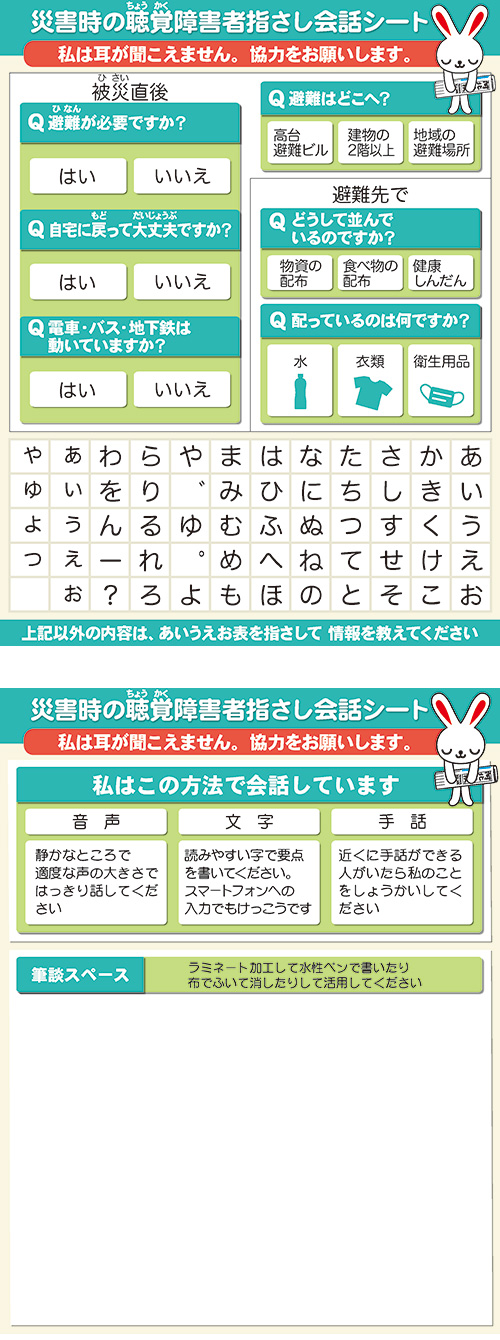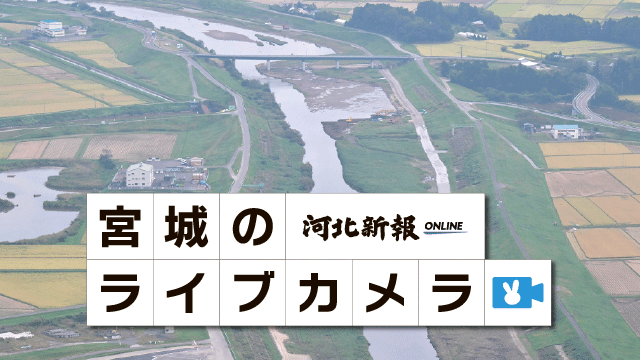Prologue/ Preserve Lives and Communities
◎Communication makes preparations worthwhile: Preventing further casualties
Record. Inform. Prepare. We have engraved in our minds the lives and deaths of each person we encountered from the Great East Japan Earthquake, and will learn from their experiences for future disasters.
Ogatsu Hospital was a small public hospital that stood at an inlet next to the Pacific Ocean in Ishinomaki City, Miyagi Prefecture. Most patients at the hospital were elderly local residents.
On March 11, 2011, the hospital was hit by a tsunami that rose above the roof of the building, 10 meters high. All 40 of the hospitalized patients, and 24 of the 30 staff members at the hospital, became victims of the tsunami.
That day, hospital administrative staff Yoshikatsu Endo (47) managed to carry one patient to the roof with his coworkers, before being engulfed by the tsunami.
“Many died, but I was saved. It’s painful to think they might say to me, ‘Why did you abandon us?’”
Words uttered by patients and coworkers, the moment they were swallowed helplessly by the turbulent waters. Endo recounted these painful memories of the situation inside the hospital, when we interviewed him at his current workplace.
In Obama, Soma City, Fukushima Prefecture, lodge owner Hideko Igarashi (64) was late to evacuate, and was swallowed by the tsunami in front of her lodge. She was saved, but her husband and uncle who accompanied her were not. She was overcome with a sense of loss and fear.
In September 2012, an acquaintance invited Hideko to a storytelling session. By talking about her experiences and the importance of evacuation, she could give back to the victims. She also hoped that this would be an impetus to recover from the tragedy.
There are times when she is at a loss for words, remembering her departed family members. While her sadness runs deep, she would like others to think of “her experiences as their own.”
In Hanagama District, Yamamoto Town, Miyagi Prefecture, the great tsunami claimed 145 victims. There are currently around 250 households that reside there, the elderly being the majority.
Shin’ichiro Kikuchi (65) is a member of a volunteer reconstruction organization. On December 7 of last year, a tsunami warning was issued for the coast of Miyagi Prefecture. He had his elderly neighbors evacuate in his wife’s car, then drove to higher ground himself. He saw the never-ending line of brake lights ahead of him, and realized that there was no end to natural disaster.
“If we suffer a major disaster now, reconstruction would be out of the question.” This year, he is setting out to create evacuation guidelines, covering issues such as elderly care and car usage.
◎”Wagakoto”: Sharing the concern
18,591 people are dead or missing from the Great East Japan Earthquake. Including the 2,303 related deaths, this number rises above 20,000. Understanding the regrets of the deceased, and the suffering of those who lost family members. Developing and communicating ways to prevent further casualties. These are missions for each of us who live in disaster-stricken areas.
The Kahoku Shimpo Publishing Company named 2013, the third year after the earthquake, “First Year of Disaster Prevention.” We will be holding a campaign on “Preserve Lives and Communities” for this occasion. The pillars of the campaign will be a serialization investigating lessons from the disaster titled “Wagakoto,” and a touring workshop that encourages disaster preparedness to residents, “Musubijuku.” As we share with readers the pain of allowing so many to fall victim to the earthquake, we rethink methods of disaster prevention and mitigation.
“Wagakoto” will begin serialization from January 3. We can nurture an awareness of disaster preparedness by sharing the concern over disasters, rather than dismissing it as a problem for someone else. We visit disaster-stricken areas and record testimonials in order to understand the fury of nature, and the actions people take in response.
”Musubijuku,” which held nine sessions since May of last year, will continue planning for future earthquakes and tsunamis with residents. Detailed accounts will be posted on the “Disaster Prevention/Mitigation Page,” and will convey evacuation procedures while encouraging residents to take action.
The potential death toll for the Nankai megathrust earthquake is imagined to reach an upward of 32,000. We hope the serialization and workshops would be a wake-up call for regions outside of northeastern Japan as well.
◎Acting quickly for family safety: Creating evacuation rules
“If a major disaster strikes again, will my family be alright?” Kiyomi Sato (40), resident of Iwanuma City, Miyagi Prefecture, recalls the fated day. Her family had become temporarily separated, and she remained anxious until confirming their safety.
On December 27 of last year, the touring disaster prevention workshop “Musubijuku,” run by Kahoku Shimpo Publishing Company, visited Sato’s home for a special session. The family meeting with Takuro Kimura, Board Chairman of the “Glocal Empowerment,Support and Aid Institute,” established evacuation rules that would allow each family member to act quickly, based on predetermined meeting areas and contact information.
Kiyomi lives together with six people: her son Ryu (12), a sixth grader at Tamaura Elementary, her daughter Seira (11), a fifth grader, Fusao (69), father of her husband who died six years ago, her mother-in-law Hisayo (63), and her brother-in-law (38).
Their house, located around two kilometers from the ocean, was not damaged by the tsunami, but surrounding areas were flooded with one meter of water.
During the day, Kiyomi works at a convenience store in Natori City, Miyagi Prefecture, and Hisayo also has a job. “I’m most anxious when the children are commuting to school, or when they are home alone with their grandfather,” says Kiyomi, as she opens a map in the living room.
The aftershocks and tsunami warning on December 7 of last year added to Kiyomi’s anxiety. “The earthquake hit after I drove out of work, and the back roads were congested with traffic. I couldn’t get through by phone or text.”
Hisayo was at home with her two grandchildren and husband. “I couldn’t leave (Kiyomi) and evacuate, and I was at a loss,” she recalls. By the time Kiyomi arrived home, the anticipated arrival time of the tsunami had already passed.
Chairman Kimura advised, “Immediately evacuate inland when a tsunami is coming, even if the family is separated. You can regroup later at a location you agreed on.” He suggested the family use a form he brought along, titled, “Our Evacuation Rules.”
The family entered the Iwanuma City Hall as their rendezvous point. It is where Kiyomi and the children stayed overnight on March 11, before reuniting with the grandparents.
The family entered the cell phone numbers of Kiyomi and Hisayo as their emergency contacts. Taking poor phone reception into account, Kimura recommended using relatives living farther away to relay communication.
After the disaster, the children have been taking their three-kilometer commute to Tamaura Elementary School by bike with a larger group of students. “I want to guide the younger students during evacuation,” said Ryu. When the supermarket was brought up as an evacuation area, Seira noted, “It’s dangerous because things might fall from above.” Kiyomi saw the two discussing seriously, and sensed their growth since the disaster.
“If the river waters don’t draw back, the tsunami is not coming. Grandpa will stay home,” says Fusao. “That’s not always the case.” Following this family argument, Kiyomi turned to her children. “You two have to protect grandpa and grandma. Make sure to tell them, ‘Let’s evacuate quickly.’’’ The family added one more rule of evacuation to their list.
【Photo01】A bus drives through the empty expanse of land in the center of Onagawa Town, Miyagi Prefecture. Three years after the Great East Japan Earthquake, the efforts of residents to revive their livelihood continue. In order to prevent disruptions against reconstruction, it is time to reconsider preparations for sudden earthquakes and tsunamis in the future. = December 24, 2012
【Photo02】The Sato family discussed evacuation rules with Chairman Kimura (second from right) = December 27, 2012, Shimonogo, Iwanuma City, Miyagi Prefecture
【Photo03】The form filled out by the Sato family. Readers should also discuss and fill in the form with family members to confirm primary evacuation areas, meeting places, and emergency contacts, including relatives living far away. We recommend posting it on the refrigerator where it is easy to see, or carrying a copy with you.
January 1, 2013 (Tues.)
Translated by Anna Wada, Steven Kroman
[Japanese] http://www.kahoku.co.jp/special/spe1114/20130101_02.html
 朝刊・夕刊
朝刊・夕刊 記事を探す
記事を探す FAQ
FAQ


















